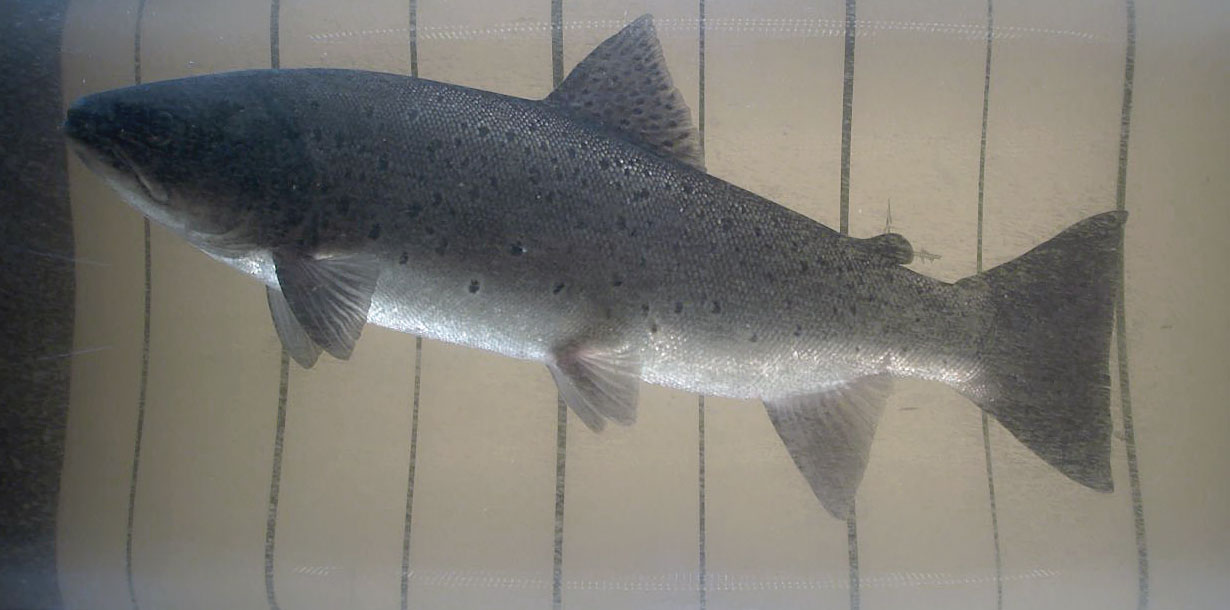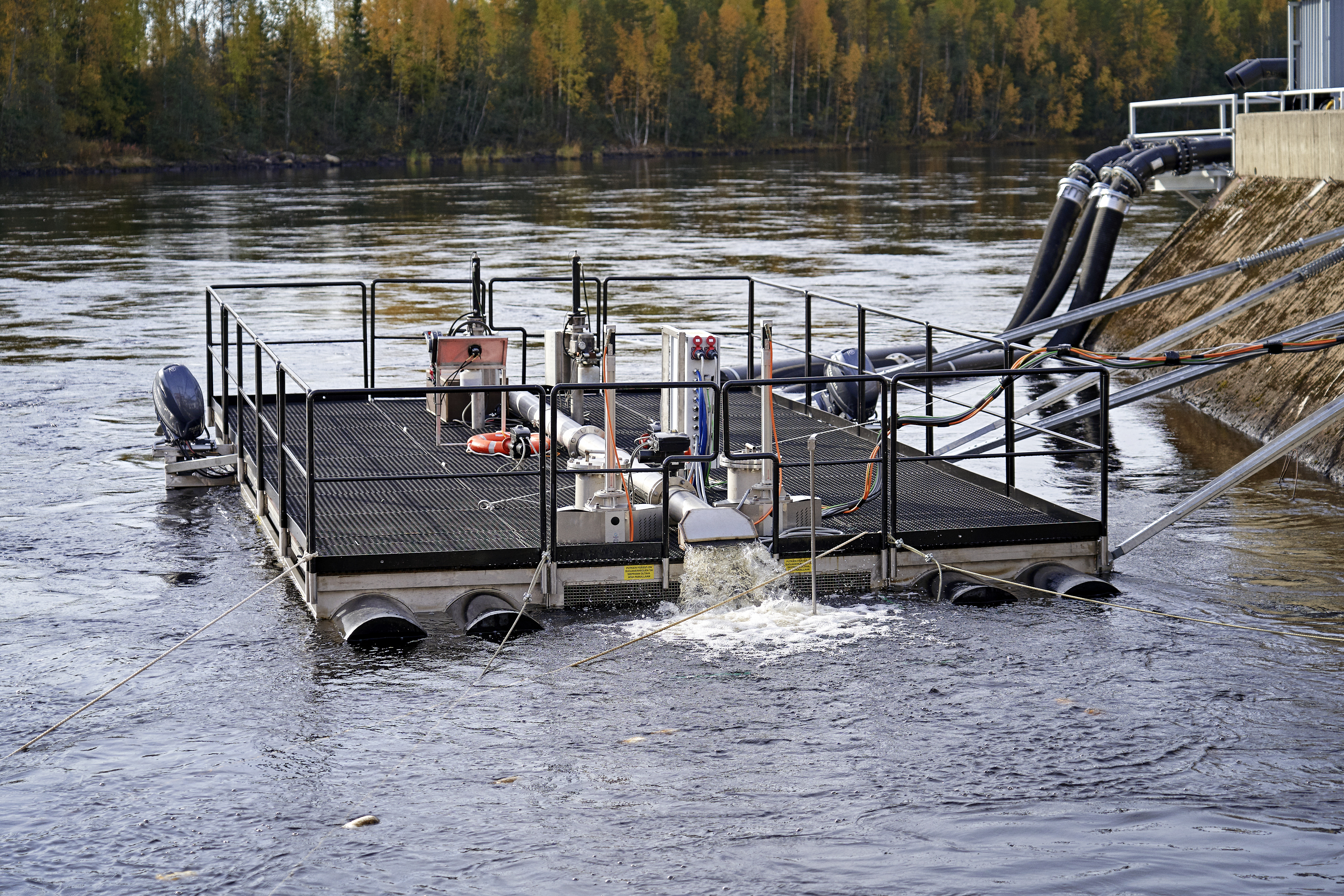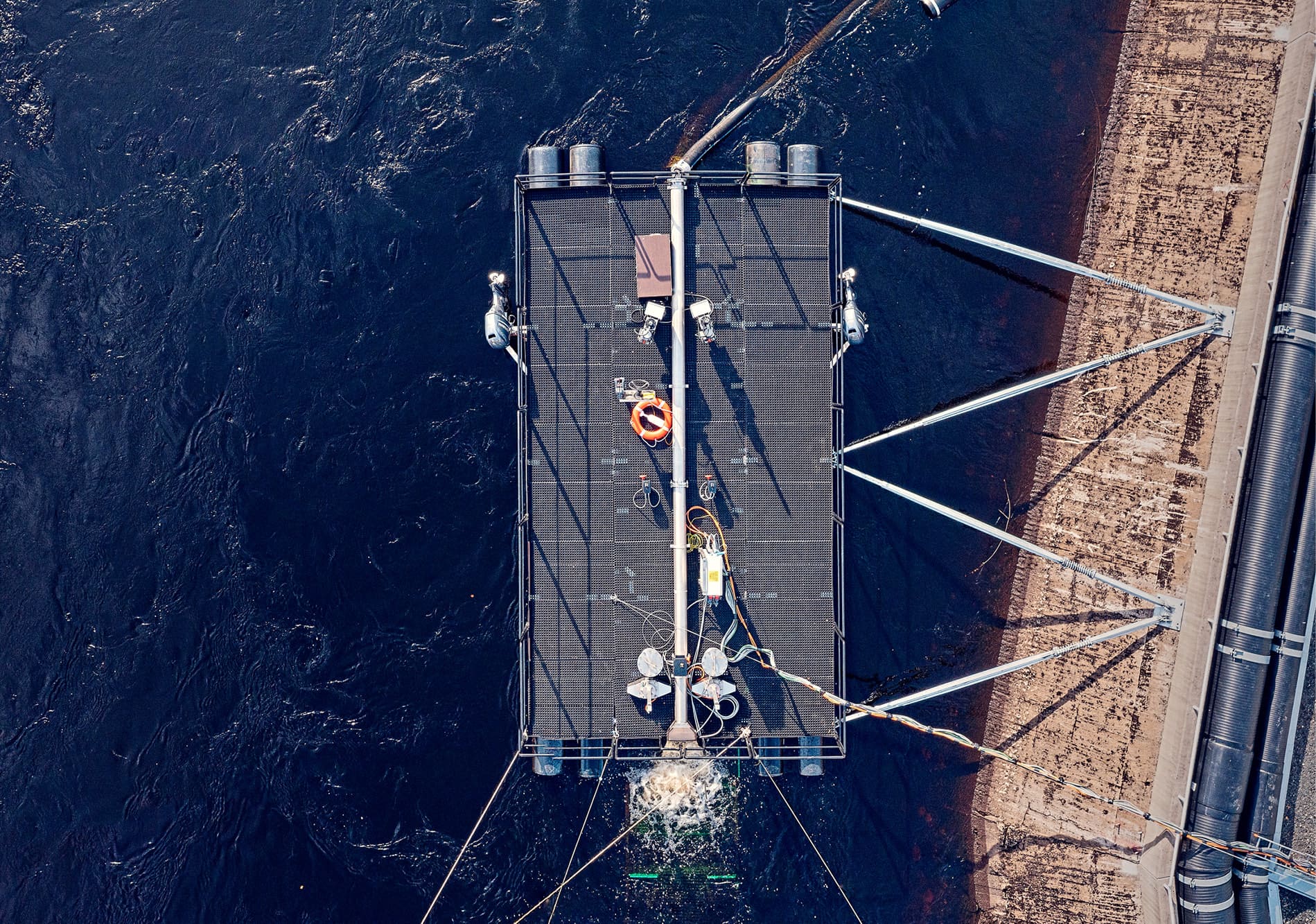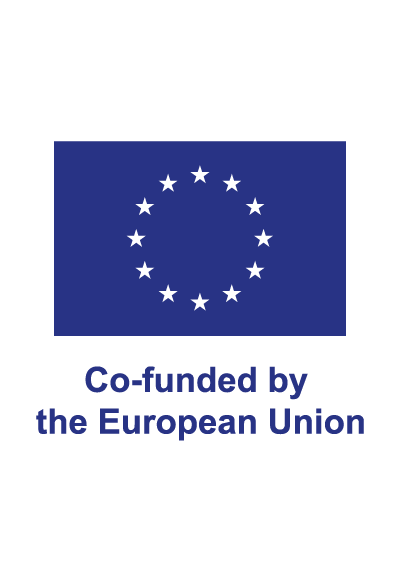Article on IWP & DC July 2023: Can a hydraulic fishway save migratory fish, water and money?
Published in International Water Power and Dam Construction July 2023.
Finnish fishway innovator Fishheart claims nimble device solves several problems for hydropower plants – and has the test results to prove it.
What started as a wild idea at the Arctic Circle in Lapland, Northern Finland, in 2016, is functioning reality in 2023. Fishheart is a hydraulic fishway device that is installed in the tailwater of a hydropower plant.
In a nutshell, the Fishheart unit produces an attraction flow that hints the fish of a way upstream and lures them in. Inside the Fishheart tubing, artificial intelligence detects the fish and collects real-time data with photos and video. Finally, the fish are transported inside water over the hydropower plant unharmed and are free to continue their journey further up the river.

Fishheart hydraulic fishway in action at Fortum Power and Heat Leppikoski Hydropower Station in river Kiehimänjoki, Central Finland. The floating unit can be seen in the tailwater below the dam on the left, and the control unit up on the bank next to it. Photo: Mikko Törmänen
Fishheart claims several benefits for hydropower plants: the mobile device can be repositioned in the tailwater for best results. The system suits all species of migratory fish. Fishheart also saves water: the system can be set up to not use any water from the reservoir, as it is able to produce the attraction flow from the tailwater. The icing on the cake is the cost – a Fishheart unit comes at a considerably lower price tag than a technical or nature-like fishway.
Customized performance for every hydropower plant
Every hydropower station is a unique complex with specific conditions. Therefore, every Fishheart hydraulic fishway is a tailor-made solution to perfectly fit its location. As the actual floating Fishheart unit is located below the dam, variations in hard pipelines onshore and flexible pipelines in the water are the answer to changing water heights, long distances, or high head dams.
By designing the pipelines and adjusting the rise velocity of the fish, the Fishheart fishway system can be adapted to meet the demands of even the highest dams.
The Fishheart fishway is usually placed in the eddy area close to the dam wall and the turbine outlets, where the fish gather to rest after fighting the turbine flows. The entrance of the fishway can be optimally positioned with water flow behind the system, creating a natural countercurrent for the fish.
Two attraction flows and safe elevation for all fish
The Fishheart fishway set-up includes a control container with electrical system hardware, a monitoring unit, and a control unit. The system works automatically and can be operated completely remotely. Programs can be tailored to suit different fish species, different seasons, and variations in local conditions.
Fishheart’s multiple attraction flows give the fish a strong feeling of a natural migratory route upstream. When the fish swim closer to the Fishheart entrance, encouraged by the outer attraction flow, they sense the inner attraction flows coming from inside the unit’s tubing.
During transfer over the dam, the fish are constantly within water, protecting them from mechanical damage that can cause bruising and raise the risk of infection.
With its adjustable attraction flow rates, the Fishheart fishway can be utilized to work with any fish species, like salmon, trout, shad, herring, lamprey, eel, Murray cod, and whitefish, just to name a few.

A sea trout inside Fishheart's tubing.
AI keeps watch and collects data
Artificial intelligence plays a key role in Fishheart’s functions. Once the attraction flow has fish swimming inside the system, the AI launches: it snaps photos and records video, and sends the gathered information to cloud or local storage, where the information is processed.
Once the AI identifies a fish in the camera system, it recognizes the species and size, and proceeds to running an analysis on whether to open the fishway or not. Migratory fish of all species, sizes and swimming capabilities can use the system to elevate over the hydropower plant.
Fishheart can be set up to accept all fish or to be selective – this feature can be used to separate unwanted and invasive species and deny them access over the dam, or alternatively, lead them to the shore into a container. To those granted permission, the process for upstream passage is initiated and the fish are transported upstream.
Fishheart’s advanced AI system can be used for several other purposes as well: for scientific monitoring, removing unwanted fish, as well as collecting and reporting statistics.
Not a drop of water from the reservoir
Fishheart uses approximately 5% of the water traditional fish passages require. Typically, the water is siphoned through a tube from the reservoir to the Fishheart system down in the tailwater. From the siphoned water, Fishheart uses less than 0.2 m3/s for the outer attraction flow.
However, in places where saving water is of key importance, the attraction flow can be created by pumping water into the system from the tailwater, meaning not a drop is needed from the reservoir.
– As a result of global warming, many countries and even whole continents increasingly suffer from lack of water. Water must be saved and used primarily for the needs of people and agriculture. Still, fish need to get past the dam and Fishheart hydraulic fishway is the solution for that, says Mika Sohlberg, Sales Director at Fishheart Ltd.

The complete Fishheart fishway on the left below the Fortum Power and Heat Leppikoski Hydropower Station: the floating unit in the water, the control unit on the bank and the tubing that leads over the dam. Photo: Mikko Törmänen
Substantially more cost efficient than a traditional fishway
In Europe, for example, the EU water directive demands member countries to arrange fishways in built rivers. With traditional fish passages this becomes very expensive, and many hydropower plants simply don’t have the space for building well-functioning passages. The hydraulic Fishheart fishway can be installed at hydropower plants with limited space, high ascent, or long transfer distances.
Fishheart just might be the answer for hydropower plants struggling to find a solution to comply with the directive.
- The cost of a Fishheart hydraulic fishway is around 20–30% of a technical fishway and only 5–10% of a fish elevator, states Sohlberg.
A vast majority of fish passages are suitable only for a limited number of species and are far from energy efficient. As the fish transfer is done by reversing the direction of the water flow, the Fishheart fishway suits also weakly swimming species like whitefish and lamprey.

The floating Fishheart unit. Photo: Mikko Törmänen
Great test results help going international
The first field tests with a hydraulic Fishheart fishway took place during the summers of 2017 and 2018 below the Merikoski Power Station in river Oulujoki, and below Isohaara Power Station in river Kemijoki, both in Northern Finland.
After two summers of testing, the first hydraulic Fishheart fishway, which closely resembles the current design, was assembled in the spring of 2019, and launched the same summer in river Kemijoki below Taivalkoski Hydropower Station, also in Northern Finland.
The testing made clear that the Fishheart fishway helped solve problems facing traditional fish passage systems. The success was attributed to Fishheart’s low space requirements, adjustability, suitability for all fish species, and notable water efficiency.
Another Fishheart fishway was employed below Leppikoski Hydropower Station in river Kiehimänjoki, Central Finland, in summer 2021. Last summer, the device helped 13 400 fish over the dam.
– The results are tremendous. The range of fish species has been wide, and we’re delighted that among them were 15 endangered lake trout, a very promising number, states Environmental Manager Katri Hämäläinen at Fortum, Finland’s leading energy company.
In June 2023, Fishheart starts testing below Raasakka Hydropower Station in river Iijoki, Northern Finland. This is the first time the hydraulic fishway is installed at the first power plant the fish encounter when starting their migration from the sea.
- There are significantly more salmon in Raasakka than in our previous test environments, and we’re thrilled to be able to show everyone how effective a fishway Fishheart really is, Sohlberg enthuses.
In 2023, Fishheart is operational at three hydropower plants in Finland: Taivalkoski, Leppikoski and Raasakka. At Taivalkoski, Fishheart starts testing the new Satelliteheart. The company is also entering the international market as testing commences in the United States and Australia.

A bird's eye view of the floating Fishheart unit. Photo: Mikko Törmänen
The bigger picture: Smoltheart, Satelliteheart, egg box and river restorations
Fishheart recognizes their hydraulic fishway is only part of a greater solution to reviving migratory fish stocks. In 2021, the company began testing Smoltheart, a new downstream solution for smolts, kelts and other fish to find their way down the river to the sea.
Next summer, the enterprise introduced Satelliteheart, an additional entry to the Fishheart fishway designed for wide rivers where one Fishheart unit may not suffice. Satelliteheart can also be combined with a fish passage that’s not up to par by providing help to the Achilles’ heel of many traditional fishways, the entry.
Fishheart also implements wide river restoration actions in upstream tributaries of hydropower stations. These actions include restoring spawning and living habitats for the returning fish, parr and young fish, as well as egg stockings to achieve a strong biological continuum.
Fishheart’s latest completed restorative work was the restoration of river Runkausjoki in Tervola, Northern Finland, a river that was cleared for log driving in the 1950’s. During the summer of 2020, a large inventory of the state of the river was made and, in 2021, Fishheart restored 17 kilometers of the riverbed back to its natural state.
In the spring of 2022, the work continued with salmon egg stockings, utilizing Fishheart’s own innovation, the Eco Egg Box. Approximately 100,000 salmon eggs were placed in the river to hatch. Electro fishing in the river was done in late summer 2022, and the findings were extremely promising with an average of 20 parr per are (100 m2).
Additionally, the original trout stock of the river had spread to new areas thanks to the restorative actions, and the river’s minnow stocks had increased. Though the work with the riverbed is done for now, Fishheart will continue planting eggs for another two years. Monitoring fish stock in the restored area in the coming years is part of Fishheart’s contract with Kemijoki Oy, a local hydropower company.
The future of hydropower just might be fishier than we imagined.
Fishheart in brief
- A hydraulic fishway device placed in the tailwater of a hydropower plant.
- Produces an attraction flow that lures fish into the device’s tubing.
- AI detects the fish and collects real-time data with photos and video.
- AI engages the elevation process and transports the fish over the plant unharmed.
- Granted hydraulic fishway status by the Regional State Administrative Agency of Northern Finland (AVI).
Interested in learning more about Fishheart? Please contact:
Mika Sohlberg
Sales Director





